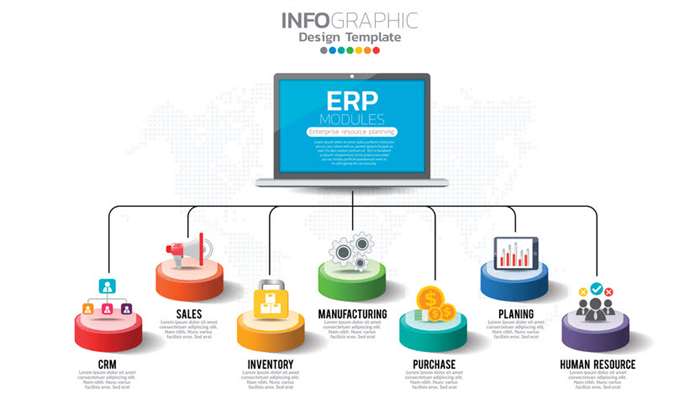This helps leaders understand exactly where to put their efforts and focus without any distractions. Digital transformation platforms are essential tools for any business looking to embrace technology and modernize its processes with success. Digital transformation frameworks also help companies keep track of their goals, track progress, and identify certain areas that require more attention and work. The strategies these platforms come up with are extremely adaptable and can easily incorporate whatever type of new technology might come up in the future. A digital transformation framework is a tool used by company leaders, consultants, and analysts to improve the overall business.
Requiring major changes in the processing and handling of data, companies had only a few years to completely revamp parts of their digital organization. GF Forsikring, a Danish insurance company, successfully got to grips with GDPR despite the wealth of personal data that insurance companies need to deal with, bringing together all of their data flows. We worked with Red Hat Consulting to strengthen our global collaboration approach and open source experience. We are now able to bring greater convenience and other benefits to not just our Korean customers but customers across all 20 of our markets. That’s not enough to ensure your digital customer experience will be viable in the future. The goal isn’t just to survive the next digital disruption—it’s to grow and continuously adapt to change.
Improving the customer experience
Companies are now leveraging technologies like artificial intelligence, machine learning, and innovative approaches like low-code and no-code development to transform their business operations. Digital transformation is the process of using digital technologies to create new — or modify existing — business processes, culture, and customer experiences to meet changing business and market requirements. This reimagining of business in the digital age is digital transformation. DocStar summed it up pretty well and cleared up a lot of confusion around this term. Bringing all that together, digital transformation is a complex and multifaceted process that goes beyond mere technology adoption. It’s about using digital technology to innovate, enhance customer experiences, and drive business performance.
In this paper, an in-depth literature study was performed and synthesized to inductively construct a conceptual framework that reconciles the distinct definitions and aspects of digital transformation. From the framework, we derived a novel and comprehensive definition of digital transformation which was validated against the literature and shown to be exhaustive. Furthermore, our definition explicitly explains why digital transformation is happening and accelerating. Researchers and practitioners can use the framework to position their work and to gain a better understanding of its wide scope and impacts. This work can be among the first steps towards a unified understanding of digital transformation.
What Are the Core Elements of Digital Transformation?
Yet, what processes and strategizing activities affect the formation of digital transformation strategies in organizations are not well understood. We adopt a phenomenon-based approach and investigate the formation of digital transformation strategies what is digital transformation in organizations from a process perspective. Drawing on an activity-based process model that links Mintzberg’s strategy typology with the concept of IS strategizing, we conduct a multiple-case study at three European car manufacturers.
- Create a digital transformation roadmap that offers a way to move from current to future state.
- While digital transformation may involve many technologies, the hottest topics currently are cloud computing, big data, the Internet of Things , and Artificial Intelligence .
- There are many tools on the market for communication, project management, and document sharing such as Zoom, Slack, and Monday.
- Executive buy-in is one of the most reliable signs of your company’s commitment to digital transformation.
- At Monsanto, Swanson discussed digital transformation in terms of customer centricity.
- “We’ve seen the COVID crisis rapidly re-shape both the “what” and the “how” of companies’ digital transformation agendas, notes Mercer’s Swift.
The prevalence of legacy technology in enterprise IT still hinders CIOs’ ability to successfully embark on a digital transformation strategy. As Beth Devin, Managing Director and Head of Innovation Network & Emerging Technology, Citi Ventures has explained, legacy tech can become a costly barrier to transformation. Digital transformation should begin with a problem statement, a clear opportunity, or an aspirational goal, Jay Ferro, chief information & technology officer of Clario, recently explained. “The “why” of your organization’s digital transformation might be around improving customer experience, reducing friction, increasing productivity, or elevating profitability, for example,” Ferro notes. “Or, if it’s an aspirational statement, it might revolve around becoming the absolute best to do business with, utilizing enabling digital technologies that were unavailable years ago.”
Drive Digital Transformation Success for Your Business & Workforce
But a digital-first mindset alone isn’t enough to power a successful digital transformation — you also need to become digitally literate. Your business must be adopting new technology and ensuring that they are being used as efficiently as possible. Therefore, the second driving factor of implementing a digital transformation strategy is enforcing effective onboarding and training sessions to create a digitally literate team. Successful digital transformation requires the cooperation of an entire organization. By leveraging organizational transformation, leadership teams ensure internal teams are learning technical skills and applying those skills to everyday tasks. Ideally, organizational transformation leads to more flexible workflows, a greater need for continuous data measurement, and a cohesive business ecosystem where all members are aligned in achieving the same goals.
By 2017, one study found that less than 40% of industries had become digitized . Over the last 12 years, she has created and managed content for many SMEs and global brands. She’s passionate about digital marketing and the impact of technology on culture and society. Digital transformation is a complex process and the people part of it is just as important as the technology.
The True Freedom of Using Open-Source Software and Solutions
Use this collection of digital transformation articles and case studies to explore further. Although IT will play an important role in driving digital transformation strategy, the work of implementing and adapting to the massive changes that go along with digital transformation falls to everyone. 70% of digital transformations fall short of their objectives according to a BCG report.
Though these partners can be managed via document-based communication, it is an exhausting obstacle to efficiency. However, technology can be used to streamline and redesign the process and make it more transparent, accurate, and timely. It also enables remote working and provides access to technology and services on demand, which is important to create an environment that helps employees to be efficient. Both digital disruption and digital transformation present immense opportunities for businesses to gain a competitive advantage. In the past, you took a cell phone, a wallet, and a house key before going out; all three of which were essential. Likewise, many products and services have become digitalized and are now available on mobile phones.
What are the five main areas of digital transformation?
Manual approaches, old tech, or inflexible environments are unlikely to provide an optimal customer experience and so customers might be tempted – or forced – to take their business elsewhere. Digital transformation, of course, helps you do things more quickly and efficiently, saving you time and money; but ultimately digital transformation efforts matter because it’s all about driving a positive customer experience. And in hospitality, the customer experience can make or break a business. The failure rate can be a barrier to digital transformation, as the fear of failure can discourage organizations from implementing new technologies and processes. Here we see the focus on integrating technologies to reinvent a company’s processes. The goal is to increase productivity, improve the customer experience for both existing and new clients, and generally lower costs.
Analyze where the market is heading so the organization can anticipate the potential for digital disruption and how it can be the disruptor instead of being disrupted by others. By taking steps to ensure the entire organization is properly integrated, buinesses can prevent isolation and ensure change takes place in a uniform manner, with uniform impacts. By being fully aware of what the digital landscape in a firm looks like, it becomes much easier to perform an impact analysis and determine how transformations will have short term effects on different parts of the business.


